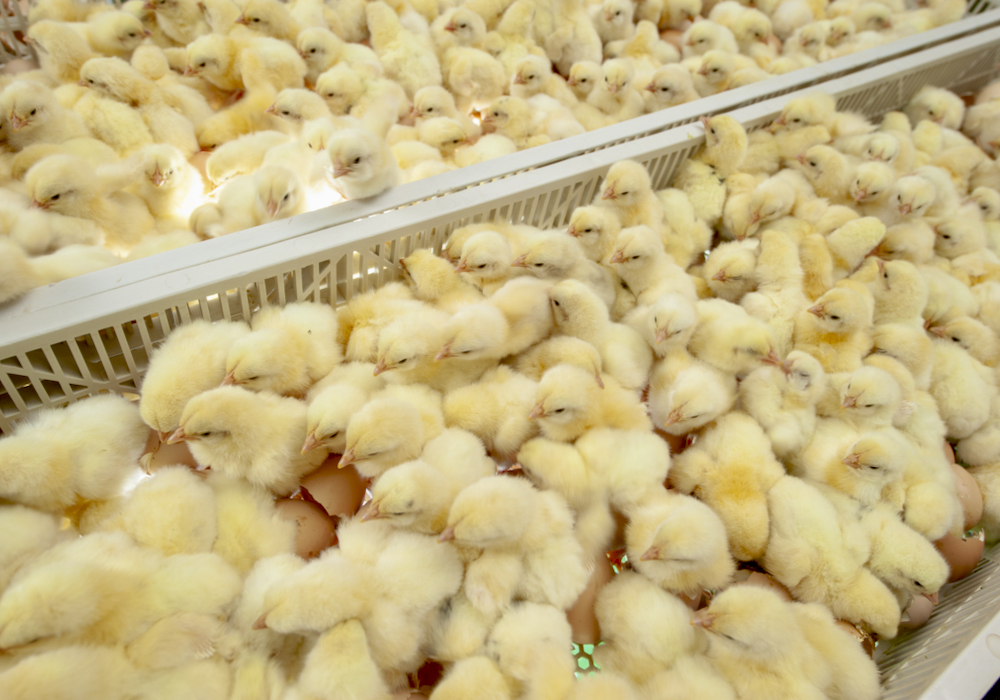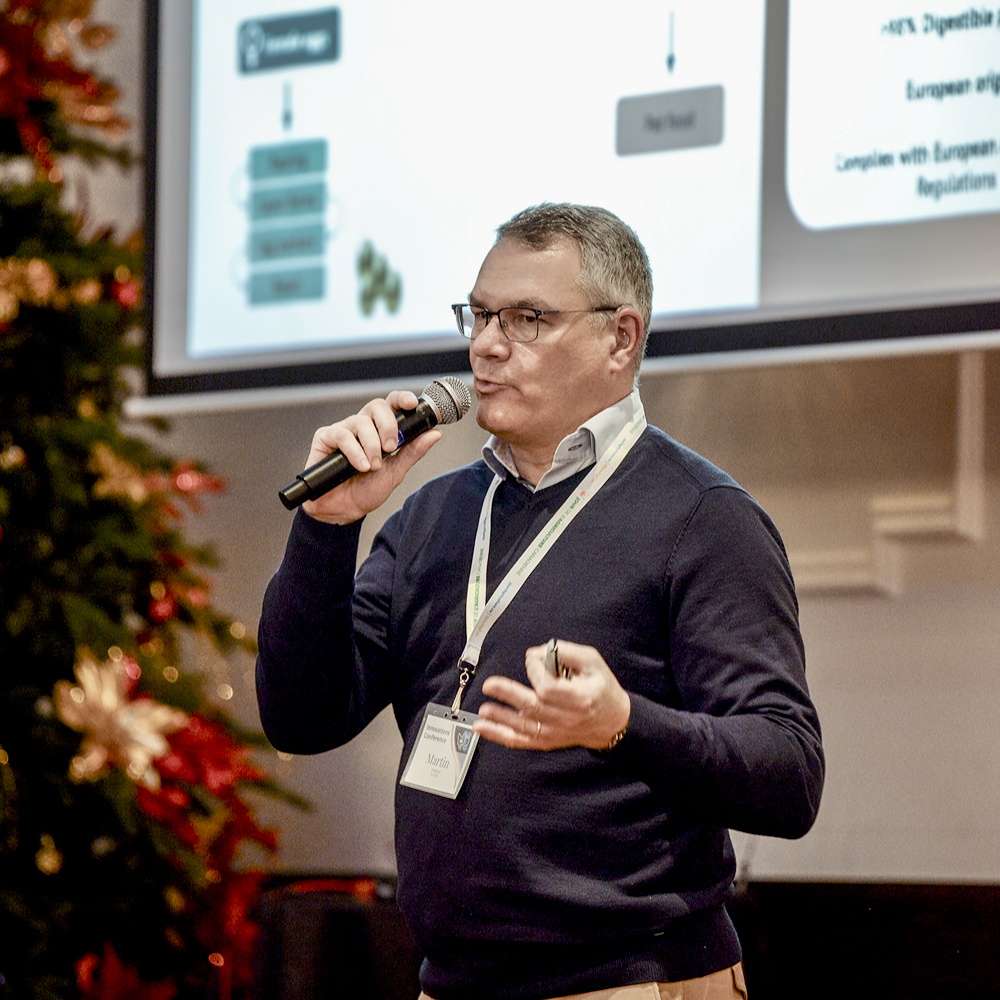In-egg gender-typing could eradicate male chick culling for poultry sector

Gender-typing technology could provide an ethical and humane solution to the disposal of day-old male chicks, while boosting poultry sector profits and efficiencies.
Read Also
Growth in canola processing to pull production forward
For the third year in a row, winter canola growers had the highest yields in the 2023 Canola Challenge. Winners…
In Ovo, a Netherlands-based poultry sector agri-tech company, has developed and commercially scaled a high-capacity egg gender-typing platform called Ella, which can determine the sex of an embryo at day nine of incubation.
Martin Enderink, In Ovo’s global sales director explained the technology at the recent Poultry Innovations Conference in London, Ont., and how it’s being used in several European countries.
Why it matters: Culling of male day-old chicks is common practice in the laying hen industry, but it has raised animal welfare concerns.
The ability to gender-type embryos before they hatch can eliminate a significant ethical conundrum in the poultry sector — the culling of billions of day-old male chicks by maceration, gassing or cervical dislocation.
Enderink said research conducted at the University of Munich determined that embryos can’t perceive pain up to and including day 12 in-ovo, so removing male-determined eggs from the incubator at day nine doesn’t cause harm.
In the laying hen industry, males are not needed. Selected males are kept for breeding purposes, but it’s the female chicks that are sent from hatcheries to be reared on farms to serve the table egg market.
The Ella platform can screen 20 eggs at a time in seconds using a gender-biomarker, mass spectrometry, and candling to sort male chicks and non-viable eggs before backfilling the incubation-bound baskets with female-only eggs.
With the platform’s short processing time, it has minimum impact on the hatchery process and increases incubation capacity for both brown and white egg operations.
“We are at 97 to 98 per cent accuracy,” said Enderink, adding the goal is 98.99 per cent or better, with undetermined eggs dispatched as a precaution.
“We’re about to come out with some additional analysis that, when we combine the two, accuracy goes up.”

photo:
Diana Martin
The Netherlands’ Het Anker, a commercial hatchery specializing in the hatching, rearing, and sale of 17-week-old layers, installed the Ella prototype in 2012 and, as accuracy increased, produced its first “girls only” batch of chicks in 2020.
By 2022, Het Anker was a cull-free facility, and its capacity doubled in May 2023 to meet the growing demand for certified no-cull layer chicks.
“It’s incredibly positive that the market has embraced our initiative so much, and we are eager to make a much greater impact on animal welfare,” said Wouter Bruins, co-founder of In Ovo, in a March release.
Bruins said Het Anker’s early adoption was crucial in scaling the platform to a commercial level and proving its value. This past summer, Vepymo, a distributor of Hendrix Genetics breeds in Belgium and the Netherlands, installed Ella in its Belgian hatchery.
In Ovo leases the platform and provides training and ongoing support as part of the agreement, but Enderink said housing the 8×25 metre (26×82 foot) system could require additional producer investment.
Ella can identify 3.5 million female chicks at full capacity based on double shifts over 44 weeks, explained Enderink, with capacity determining the cost of leasing.
Leanne Cooley, a poultry scientist and auditor with L.H. Gray and Son Ltd., asked Enderink if smaller operations and farms in Canada would benefit from the system, given the capital costs associated with it.
Enderink said In Ovo values smaller operations and works to ensure they survive and thrive with the technology.
“When utilizing the machine to the full, you get the lowest price point; if you use it for one-third of the capacity, the price is higher,” Enderink said.
“The question is, what is a small hatchery? We normally say anything from 800,000 chicks produced per year.”
In Europe, screened eggs are a value-added product for pet food, a rapidly expanding market.
Initially, German food and flavouring ingredient company Symrise provided hatchery contracts for the purchase of male eggs to create an in-demand protein powder additive for pet food. Several more ingredient companies have since come online, increasing competition for the male eggs and creating higher-value egg contracts. Previously, male eggs were sold to zoos and those rearing raptors.
Welfare, environmental benefits
Currently, 10 to 20 per cent of Europe’s hen flock comes from cull-free hatcheries.
Enderink said the Netherlands and southern Europe lead the way in animal welfare legislation, while eastern European countries lag.
France and Germany have banned the killing of day-old male chicks, forcing producers to bear the 12-week cost of raising roosters for slaughter. Italy will follow suit by the end of 2026, with cull ban debates ongoing in the United Kingdom and the Netherlands. Switzerland, after extensive input from all industry stakeholders, will standardize in-egg sexing by the end of 2024.
Early adopters in Canada could inform government legislation, especially if stakeholder roundtables provide input on optimizing profit along the value chain. Otherwise, uninformed legislation could unintentionally cause financial harm, Enderink said.
For example, France’s cull ban exempts white egg producers and is a cost-based formula that doesn’t allow for increased margins or profits across the value chain.
“They (male layer) don’t want to eat, they don’t want to grow, their feed conversion rate is horrible,” said Enderink. “The carbon footprint and sustainability are disastrous, and the cost is very high.”
On average, a male layer requires 11.5 weeks to reach a slaughter weight of 1.16 kilograms, utilizing 3.28 kg of feed and producing 11.5 kg of CO2 per kg of meat. In comparison, a male broiler hits its 2.4 kg slaughter weight at seven weeks, requires 4.48 kg of feed, and produces 6.1 kg of CO2 per kg of meat.
“It’s a headache scenario because there is no demand,” said Enderink. “In Germany, there’s a replacement rate of 40 million laying hens a year, so also 40 million males.”
Most European roosters are exported to Africa, disrupting its infrastructure, which isn’t sustainable.
Recently, In Ovo entered a EUR$40 million loan agreement with the European Investment Bank to propel the expansion of Ella and develop Eve, its innovative sensor platform aimed at optimizing the entire hatching process to further improve animal welfare.
“As an industry, we need to be open-minded about technologies, also things like social responsibility,” Enderink said. “Consumers currently don’t know that male chicks are culled. But I think for the next generation, it is something that needs to be resolved.”
Source: Farmtario.com

